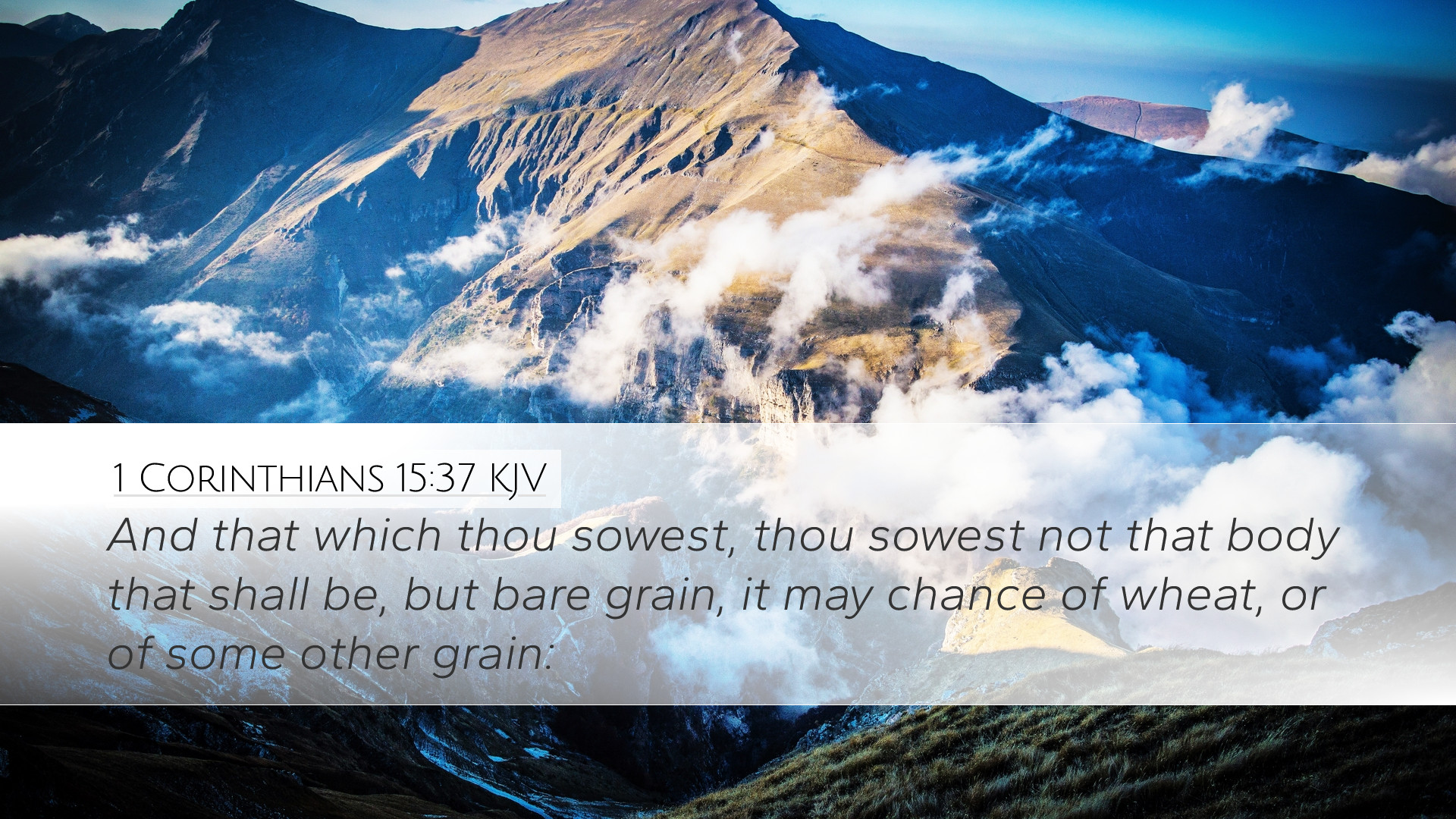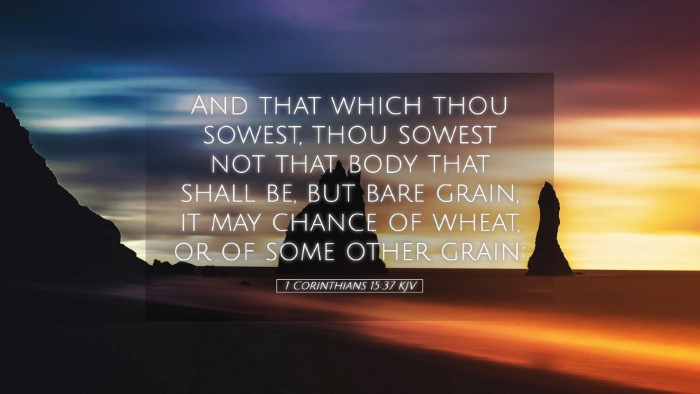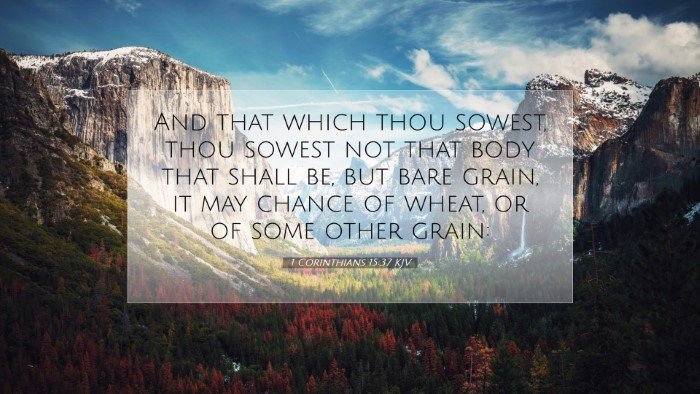Commentary on 1 Corinthians 15:37
Bible Verse: "And that which thou sowest, thou sowest not that body that shall be, but bare grain, it may chance of wheat, or of some other grain."
Introduction
This passage from Paul's first letter to the Corinthians provides profound insights into the resurrection and transformation that believers will experience. It employs a farming metaphor to illustrate the mysterious nature of life after death, emphasizing the distinction between the physical body and the resurrected form.
Exegesis and Analysis
The Concept of Sowing and Reaping
Matthew Henry notes that the act of sowing is a vital analogy for understanding the resurrection. Just as a seed must die and undergo transformation to give rise to the new life of a plant, so too must our earthly bodies experience death to be resurrected into a glorified state. This scriptural imagery conveys the hope of renewal through Christ's resurrection.
The Nature of the Seed
Albert Barnes emphasizes the notion of the seed's transformation. Paul asserts that when one sows, one does not sow the body that will be, but rather a bare grain. This bare grain, whether it is of wheat or another type, symbolizes the earthly body—a temporary state that is distinct from the divine body we will receive. Here, Barnes highlights how the term "bare grain" reflects the humble, unadorned nature of our current existence compared to the glory of the resurrection.
Resurrection Bodies
Adam Clarke expands on the implications of this transformation, alluding to 1 Corinthians 15:38, where Paul asserts that God gives a body as it has pleased Him. Clarke points out that the resurrected bodies will be suited for eternal existence, divinely crafted, and radiant with glory, distinguishing them significantly from our earthly forms.
Theological Implications
Understanding Death as Transformation
In traditional Christian theology, death is often viewed with trepidation. However, this passage recontextualizes death as a necessary step towards spiritual rebirth. Matthew Henry highlights that understanding death this way allows believers to view their mortality with hope. This perspective aids in the struggles against the fear of death, reminding Christians of the glorious future that awaits.
Our Resurrected Bodies
Albert Barnes argues that the metaphor Paul uses here reassures believers regarding their state post-death. It speaks to the continuity of life beyond the grave, with a profound transformation that remains rooted in God's creative power.
Moreover, Adam Clarke adds that expectation of a transformed body encourages believers to live righteous lives in anticipation of their ultimate resurrection. This awareness should inspire believers to engage in their earthly duties faithfully, knowing that there is a promise of perfect renewal that lies ahead.
Practical Applications
Hope in Seemingly Hopeless Times
The illustration of the seed provides tangible hope for believers in despair. Matthew Henry's commentary stresses the significance of maintaining faith during trials, recognizing that God's timing and processes are often hidden within seed-like trials, preparing us for eternal glory.
Encouragement in Ministry
Pastors and ministry leaders can find valuable encouragement from this passage. Believers are called to sow seeds of truth in their communities. Albert Barnes emphasizes that those involved in ministry should remember the transformative power of the gospel and its ability to bring new life, paralleling the sowing of a seed.
Living with Eternal Perspective
For students and scholars of theology, Adam Clarke suggests that understanding our current existence as a phase towards our ultimate resurrected life prompts believers to invest in eternal matters. This perspective should govern how one engages with cultural issues, prioritizing spiritual growth and the advancement of God’s kingdom.
Conclusion
1 Corinthians 15:37 resonates deeply within the Christian faith, encapsulating themes of transformation, hope, and divine purpose. By employing the metaphor of sowing, Paul articulates a view of death that is not final; rather, it is a precursor to glorious resurrection. Such insights contribute significantly to the theological understanding of resurrection and can bolster the faith of believers facing the inevitability of death.


